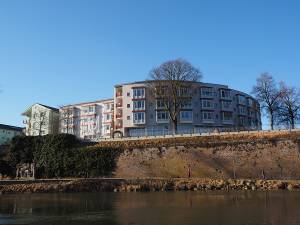Many of our elderly need help with living expenses because they are living off of fixed incomes like Social Security and have little in the way of savings.
To help those in need the government has set up the HUD senior housing program which is formally known as the Section 202 program and anyone that meets the eligibility requirements can participate.
In fact, the government has taken the issue of senior housing so seriously that it has amended housing laws to permit the exclusion of families with children from designated senior communities.
How Do You Qualify For HUD Senior Housing?
To qualify as senior housing HUD must have made the determination that the dwelling is designed only for senior citizens under a any level of government program or only people aged 62 or older live there or at least one person is 55 or older in at least 80 percent of the units that are currently occupied while also adhering to a policy that shows that the dwellings are intended for those aged 55 or older.
The HUD senior housing program also provide money to firms to construct, acquire and rehabilitate buildings for the purpose of serving as housing for low income seniors besides providing rent assistance to the elderly.
Bu doing this more affordable senior housing becomes available with many offering support services for the elderly. This allows elderly people deemed very low income with more options to live independently while also providing services like cooking, cleaning and transportation.
To qualify for subsidized senior housing assistance the applicant or their spouse must be at least 62 years old and classified as having a very low income.
This determination is based on median income levels for every state and county taken from continually updated tables that are maintained by HUD. If, after subtracting any medical expenses approved by HUD, the applicant’s income is less than half of the median income for their area they qualify and only have to pay 30 percent of your adjusted income for rent with Section 202 picking up the rest.
As the program grows and more people reach retirement age the HUD senior housing program has to be able to grow as well to meet the needs of our ever-increasing senior population.
Low Income Required For HUD 202 Housing
 Persons are eligible to apply for assistance if their incomes are very low, which is generally equal to 50 percent of the area median family income, adjusted for household size. Residents are predominantly elderly women living alone with incomes between $5,000 and $15,000. The median 2006 income of about $10,000 is well below the income eligibility limit for the program.
Persons are eligible to apply for assistance if their incomes are very low, which is generally equal to 50 percent of the area median family income, adjusted for household size. Residents are predominantly elderly women living alone with incomes between $5,000 and $15,000. The median 2006 income of about $10,000 is well below the income eligibility limit for the program.
The 1974 Housing Act established a new mission for Section 202: to serve persons with low incomes, defined as households at or below 80 percent of the local median income.

 Many of our elderly living primarily off of Social Security are in serious need of affordable housing and this is where
Many of our elderly living primarily off of Social Security are in serious need of affordable housing and this is where